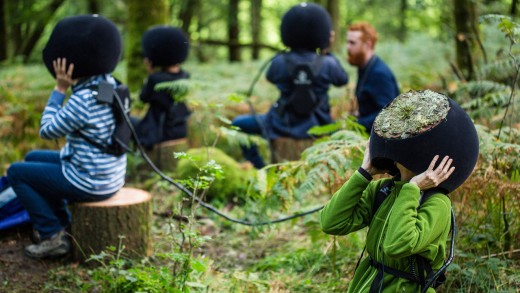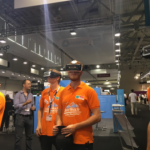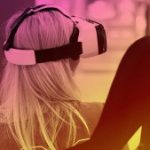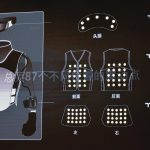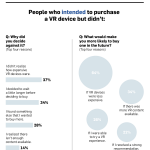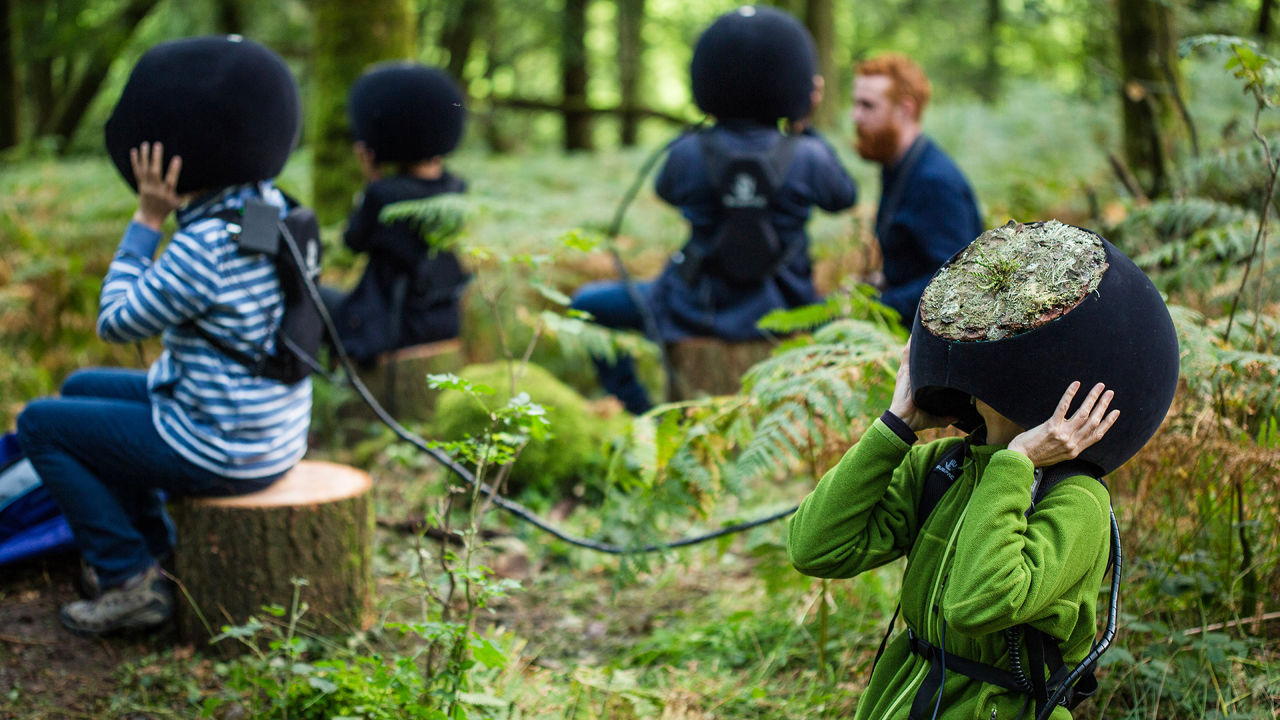My Trippy, anxiety-Triggering Day Spent In digital fact
unless not too long ago, I purposefully refrained from the onslaught of digital truth. though I write for a e-newsletter that celebrates technological innovation, I don’t really feel I need to experience all of it in my opinion. i’m a film buff of lengthy standing, and glowing rectangles a suitable distance away have at all times accomplished the trick for me. I’ve long regarded as 3-d cinema a headache-inducing fad.
So it was with some trepidation that I stepped into the New Frontier showcase on the Sundance film festival on probably the most remaining days in January. I had been bombarded with emails about the entire digital fact movies and experiences on display, and made up our minds it used to be my professional obligation to analyze.
the very first thing i attempted on the exhibition, which spanned two flooring, was an experience known as in the Eyes of the Animal. An attendant fitted me with a tremendous customized helmet (pictured beneath) and a vest that, I quickly learned, might vibrate. I was anxious: What an absurd amount of belief I had simply placed in a bunch of strangers! they could imprint me with no matter nightmarish subject matter they wished. I had consensually exceeded over my reality, with hardly ever any information of what I was trading it for.
in the Eyes of the Animal turned out to be a mostly peaceable commute, one thing like being a bubble floating in an ocean full of bubbles. I didn’t comprehend exactly what was once going down, however I did be aware of that I felt small, and greater than as soon as, I had the feeling that I used to be at risk of predation. Afterwards, I was told that was once precisely what in the Eyes of the Animal was about: It provided a ride throughout the lower rungs of an oceanic meals chain.
My first VR travel was attention-grabbing but also befuddling, and i discovered the vibrating “haptic” vest largely uncomfortable. I went upstairs to sample more of the exhibition.
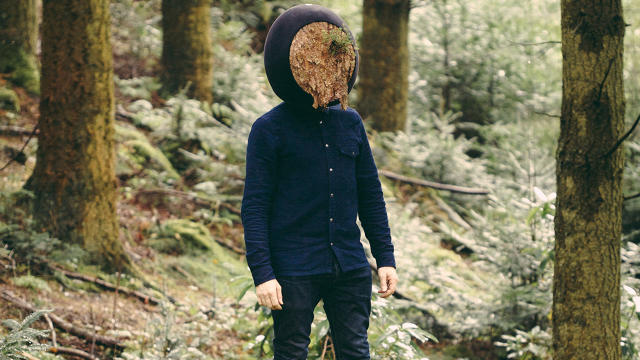
subsequent up used to be actual Virtuality, a sizzling ticket at the pageant that some waited up to an hour to experience. actual Virtuality was a roughly multiplayer VR sport; my friend Mason and i tried it at the related time. here’s what onlookers saw: Mason and me, strapped right into a VR getup that included a headset, backpack, and trackers for our fingers and feet, fumbling around in what amounted to a tiny black field theater, every so often selecting up real-existence colorful cylinders on the floor and inserting them in an actual-lifestyles field.
right here’s what Mason and that i noticed: three immersive environments—first a spaceship, then a futuristic city, and at last a temple—that we had been steered to navigate together. We noticed digital cylinders and a digital box corresponding to the actual thing.
Confusingly for our brains, just some objects rendered before our eyes had real-life correlatives; others, upon being touched, have been published to be ghosts. When the final stage—a temple maze—launched, the game’s operators abruptly and jarringly shouted at us: “Don’t lean on the partitions!” Later someone (who asked to remain nameless) advised me that on the primary day of the exhibition, a person had done simply that and fell flat on the floor, for the reason that digital partitions had no actual-lifestyles referent.

Mason and that i were spared any such fate, on the other hand, and our experience was once principally interesting. I was once becoming a VR convert!
Then there used to be my trial run with Google Cardboard. in case you haven’t skilled it yet—the new york instances dropped 1.2 million of them on subscribers in November—it can be a small cardboard instrument that works like a ViewFinder for your own smartphone. while you download a VR app, you’ll find no matter is going down in three-D and transfer around throughout the digital surroundings. The Google Cardboard film I noticed was once a delightful caricature depicting an Ice Capades gentle saber battle, sometimes interrupted by a poorly skilled endure. I laughed hysterically. the thing went down as straightforward as a Pixar short, and i might see how Google Cardboard’s ease of use used to be likely to be a tremendous driver of VR adoption. (If you wish to have to take a look at VR quickly and cheaply in your home, merely purchase a Google Cardboard viewer on eBay for about $3; as soon as it arrives, obtain an app like NYT VR for your smartphone, and within minutes, that you would be able to be dodging a looming bison in your lounge.)
up to now, my VR expertise was once confusing, exciting, and fun. but my day used to be about to take a depressing flip.
I wasn’t advised a lot about massive prior to I stepped into the theater showing it. I’d been informed that it was once primarily based partly on the childhood experiences of an artist of Serbian starting place, and that although she’d originally hesitated to make the work, she’d determined it used to be essential.
giant, it turned out, was once a short fictional film depicting what are possible the remaining minutes of a domestic caught in a warfare zone. the oldsters and a young youngster have huddled in a cellar; I as the viewer was free to move my head round and notice objects rattled from shelves as bombs fell within the distance—after which, finally, on us.

Them I watched a brief VR film known as Collisions. It turned out to be a documentary, together with some 3D animated scenes, on the subject of an indigenous Australian tribe’s contact with modernity, in the form of an atomic bomb test. A devastating scene depicted kangaroos fleeing futilely from a mushroom cloud, collapsing earlier than my eyes, dead.
i thought I had stepped into New Frontier, principally, to pattern a few video games and spot a few cartoons. as a substitute, I used to be simulating trauma.
What are the implications of creating virtual truth experiences that duplicate and simulate trauma?
There are some who see handiest, or largely, upsides. Take Chris Milk, the VR entrepreneur whose app, Vrse, has introduced subject matter about Syrian refugees and others pushed from their houses with the aid of battle. In his March 2015 TED talk, Milk stated that he thinks VR has the likelihood to turn out to be “the ultimate empathy desktop.” He has supplied VR experiences of the downtrodden to decision makers at the World economic forum in Davos. As he says in his discuss, VR “connects humans to other people in a profound method that I’ve by no means seen ahead of in another type of media,” and subsequently, he thinks the expertise has “the potential to if truth be told trade the world.”
that is the declare that interests me—the declare at the coronary heart of VR and in all probability of almost all documentary media: that it will probably change the world. by using exhibiting the horrors of conflict ever more viscerally, will we bring in a brand new era of peace?
It’s an idea that has existed as long as the photographic medium has. In her book concerning the ache of Others, Susan Sontag examines a book of early photographs of the Civil conflict lifeless. The caption to one in particular horrifying picture reads, “listed below are the dreadful small print! let them assist in combating any such calamity from falling upon the nation.” Many documentary photographers and filmmakers have seeing that taken as a piece of writing of faith that their photography play a causal position in effecting social trade, in making the horrors they’ve captured with their lenses more uncommon. there’s now something called the Puma inventive impression award, backed via the sneaker company, whose stated purpose is “to honor the documentary movie developing essentially the most important influence on the planet.” simply the day sooner than my visit to the VR show off, I met in short with Cara Mertes of JustFilms, an initiative of the Ford foundation that helps fund social-issue documentary movies. JustFilms doesn’t discuss of a mere summary duty to document; its promotional supplies discuss concretely of “making a difference in people’s lives.” Mertes conceded JustFilms used to be within the earliest ranges of looking to quantify simply how documentaries affected change.
clearly, wars have now not been eradicated for the reason that advent of images or the Puma creative Award. So can we predict VR to prevail where more primitive mediums have no longer?
The 1995 movie abnormal Days imagines a dystopian world in which there’s heavy demand for something referred to as a “blackjack.” We analyze that blackjacks are virtual truth snuff films, downloaded from the brains of actual people who had died gruesomely. The misfortunes of the lifeless transform the thrills of the dwelling, and on the planet of the film, entrepreneurs stepped in to make a revenue.
I incline towards anxious pondering, so by way of the end of my day at Sundance’s VR exhibition, I used to be already imagining a odd Days dystopia where, a long way from curing the sector of suffering, VR simply commodifies the struggling of some for the leisure of others. Worse than a black market of snuff motion pictures, even, might be a cultural elite going to VR movie festivals, speaking about how “visceral and moving” the experiences were over cocktails—and then doing nothing in any respect.

I explained my misgivings in an interview with Shari Frilot, who had curated the Sundance exhibition. How do we forestall that future, I requested? Given VR’s energy, wasn’t there an responsibility to verify audiences have interaction with it productively? “I do consider it,” said Frilot, but she mentioned that she felt it used to be too early to think about absolute best practices for VR practitioners. “I don’t suppose a lot about methods to function VR at this stage,” she said, “because I don’t think we’re even to the stage yet of understanding what it does.” She wasn’t even sure tips on how to classify it but as a medium; there used to be something extra theatrical than cinematic about it, in that it “engages our feel of area . . . and our experience of area is where our survival intuition is housed.” VR, then, can jack in more viscerally to the reptilian part of a viewer’s brain. What that intended and what people might or will have to do with that, she wasn’t yet certain.
As know-how brings picture-makers nearer to delivering an expertise of a more excellent empathy, it appears time to test that perception and reality-check the claim that it has the prospective to support the arena. The technology that perfected image-making units has additionally yielded new tools that must be capable of measure the true, human results of these devices. facebook, which bought VR large Oculus Rift, additionally controls more knowledge about human sentiment and behavior than any individual else, and will have to be able to give you the option to measure and record on the results VR experiences have on users.
thankfully, some people are measuring the consequences of VR. thus far, they tend to hail from the stodgy world of academics, fairly than the sexier worlds of cinema and commerce. The tentative early information coming in is encouraging. One learn about revealed in trends in Cognitive Science, titled “changing our bodies adjustments Minds,” used VR to simulate the expertise of residing in a black physique. women who underwent the experience scored better for egalitarianism on a take a look at measuring bias called the implicit association take a look at. another find out about put VR customers within the digital physique of a child, and in a similar fashion discovered measurable cognitive adjustments thereafter. And a roughly artwork-set up/science-experiment mashup known as “Gender Swap” used VR to assist customers simulate switching gender.
however these encouraging experiments do not imply it is time to have fun world peace yet. it’s sophisticated. some other VR study on race swapping appears to have elevated apparent racial bias for many individuals. And in view that VR is so new, its long-term results can simplest be speculated upon.
The extra advanced and suave a VR experience, the harder it may be to measure its results in a scientifically significant means. One participant in “Gender Swap,” whereas appreciating the expertise, stated that the experimenters have been unable to “answer questions about experimental rigor and possible guidance for quantifying their claims for empathy constructing.” (Her put up used to be titled, “the limits of virtual fact: Debugging the Empathy laptop.”)
The Sundance house analyzing VR is as it should be named; that is certainly a brand new frontier. we all know VR is exciting. we know folks stand to make some huge cash off it. What we have no idea yet, totally, is what it does. these collaborating in the sexier and extra lucrative corners of VR may imagine tempering their claims unless these toiling in tutorial backwaters have in truth substantiated them.
Leaving New Frontier, I preferred the makers who proceeded with a sense of reverence and caution. “As a maker of VR, you’ve a huge duty,” mentioned Milica Zec, one of the most administrators of big. I left Sundance pondering the same factor, and hoping her fellow VR makers agree.
virtual truth’s First individual Shooter problem
(33)

